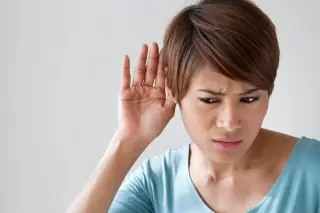What are the Types, Degrees & Configurations of Hearing Loss?
Hearing loss is defined by type, degree, and configuration. Learn a little more about these categories to help you understand the hearing loss you’re experiencing.

Posted by Casandra Lee in Hearing Aid Lifestyle
Types of Hearing Loss
There are three main types of hearing loss:
- Conductive hearing loss is when sounds don’t travel effectively from the outer ear to the middle ear, making noises softer and more difficult to distinguish. Causes include fluid in the middle ear, too much earwax, ear infection, swimmer’s ear, and foreign body in the ear canal.
- Sensorineural hearing loss results from damage to the inner ear or the nerve pathways connected to the brain. This is the most common type of permanent hearing loss. Causes include drug use, head trauma, exposure to loud noises, aging, and genetic predisposition.
- Mixed hearing loss is when conductive and sensorineural hearing loss occurs in combination.
Configurations of Hearing Loss
The configuration, or shape, of hearing loss refers to where the loss occurs across all audible frequencies. For instance:
- High-frequency hearing loss is when high tones are more difficult to hear.
- Low-frequency hearing loss results in poor hearing for low tones.
- Flat hearing loss indicates the same degree of hearing loss for high and low tones.
Degrees of Hearing Loss
There are five degrees of hearing loss, which may occur anywhere along the frequency spectrum. Here’s how to tell your degree of hearing loss:
- Minimal hearing loss is so minor that it’s still possible to hear soft sounds like falling leaves and dripping water without a hearing aid.
- Mild hearing loss makes it hard to hear ticking clocks, whispers, and other soft noises.
- Moderate hearing loss affects the ability to hear conversations, crying babies, and ringing telephones.
- Severe hearing loss makes it difficult to hear loud conversations, traffic noise, and barking dogs.
- Profound hearing loss limits the ability to hear some of the loudest noises, such as airplane jets, lawnmowers, and fire alarms.
- Other Hearing Loss Descriptors
- Here are some other terms used to describe hearing loss:
- Bilateral hearing loss occurs in both ears.
- Unilateral hearing loss occurs in only one ear.
- Symmetrical hearing loss means the degree and configuration of loss are the same in both ears.
- Asymmetrical hearing loss means each ear has a different degree and/or configuration of loss.
- Progressive hearing loss becomes worse over time.
- Sudden hearing loss happens quickly, which warrants immediate medical attention.
- Fluctuating hearing loss changes over time, worsening on some days and improving on others.
- Stable hearing loss remains the same over time.
If you suspect you may be experiencing hearing loss, schedule your free hearing test and consultation at Elite Hearing Centers of America. We offer 30-day free trials for hearing aids, so you can test out some of the world’s most advanced devices at no cost and with no obligation—no kidding! To get started, please call us at 855-432-7354 or contact us online. You’ll be glad you did!
